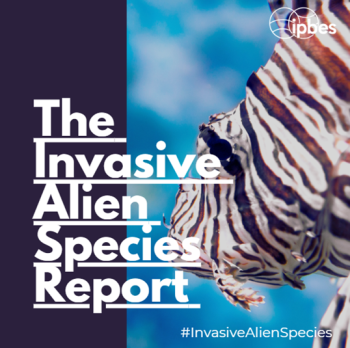Search for non-native species information
All of our resources in one place
Search results
You searched for "Flatworm"
Information Portal - Australopacifica atrata
Common name: Black land flatworm
Synonym(s):
Materials and resources
Other sources of information: Record suspected sightings of non-native species The Flatworm Code of Practice (PDF) contains information on preventing the spread of non-native flatworms if you suspect you have these in your garden. You can report sightings of flatworms to Buglife’s flatworm survey.
Invertebrates
A Code of Practice has been produced for this and other non-native flatworms in GB. This is a practical guide to help producers and traders of nursery stock detect and limit the spread of non-indigenous flatworms, notably the 'New Zealand' flatworm, Arthurdendyus triangulatus, and the 'Australian' flatworm, Australoplana sanguinea.
Codes of practice
Available resources Flatworm Code of Practice Horticultural Code of Practice Pet Code of Practice Zoos Code of Practice (PDF) . View the Zoos Pathway Action Plan . Boating Code of Conduct . View the Boating Pathway Action Plan . Angling Code of Conduct . View the Angling Pathway Action Plan .
Management
American skunk-cabbage) Mahonia aquifolium (Oregan grape) Mustela vison (American mink) Myriophyllum aquaticum (parrot’s feather) Pacifastacus leniusculus and other non-native crayfish Pseudorasbora parva (topmouth gudgeon) Rhododendron ponticum (rhododendron) General guidance is also available for the following groups: Aquatic plants Flatworms
Home
Major new report on invasive non-native species published
 The Intergovernmental Science-Policy Platform on Biodiversity and Ecosystem Services (IPBES) has published the results
The Intergovernmental Science-Policy Platform on Biodiversity and Ecosystem Services (IPBES) has published the results
Horticultural Code of Practice
PDF) - latest (2011) version View the Horticultural code for Scotland (PDF) Other resources that should be read in conjunction with this code include: Species currently listed on Schedule 9 of the Wildlife and Countryside Act (external link) Guidance on section 14 of the Wildlife and Countryside Act (PDF) Knotweed Code of Practice (PDF) Flatworm
Recording
Flatworm Survey (external link) - record non-native flatworms. Lily Beetle Survey (external link) Rosemary beetle (external link) Citrus longhorn beetle (external link) - report a sighting through Tree A!ert. Oak processionary moth (external link) - report a sighting through Tree A!ert.
Ballast water
The Convention defines ship as a vessel of any type whatsoever operating in the aquatic environment and includes submersibles, floating craft, floating platforms, Floating Storage Units (FSU’s) and Floating Production, Storage and Offloading vessels (FPSO’s).
Isle of Man
The ‘New Zealand’ flatworm, Arthurdendyus triangularus and ‘Australian’ flatworm, Australoplana sanguinea , are non-indigenous flatworms predominantly found in gardens where they pose a potential threat to native earthworm populations.
